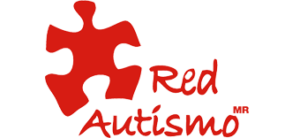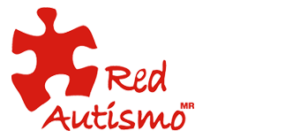AUTISM SPECTRUM DISORDER (ASD)
The autism spectrum disorder (ASD) is a developmental disorder that involves a combination of excesses and deficits present in the child’s life that affect personal, social, academic or occupational functioning.
Autism spectrum disorder (ASD) includes:
- Autism
- Asperger’s syndrome
- Pervasive Developmental Disorder, Not Otherwise Specified (PDD-NOS)
ASD is a neurobiological disorder due to the manifestation of a set of clinical data (neuroanatomical, biochemical, neurophysiological, genetic and immunological) by intrinsic factors (individual genetics) and extrinsic factors (environmental factors that can modify the genetics of an individual prone to vulnerability).
In recent years the detection of this neurobiological disorder has increased, being identified in 2012 – 1 in 68 children, having greater prevalence in men.
It manifests itself in the first three years of life and characteristics can be noticed before the 12 months when these are severe, due to the baby not presenting the expected milestones of development in the area of socialization and language; and after 24 months when the characteristics are more subtle.
Main Characteristics:
- Deficit in social interaction
- Deterioration in verbal and nonverbal communication
- Restrictive Behavior Patterns
Alarm Signs:
- Does not respond to his/her name at 12 months
- Does not point to show something of interest
- Does not play “pretend” at 18 months
- Avoids eye contact and wants to be alone
- Has trouble understanding other people’s feelings or considering these feelings
- Language delay
- Repeats words or phrases over and over again (echolalia)
- Gives answers unrelated to the questions that are asked
- Gets angry over minor changes
- Has obsessive interests
- Presents unusual and repetitive movements (e.g. flapping, rocking or spinning, etc.)
- Has unusual reactions to sounds, smells, physical or visual contact
Other Characteristics:
- Hyperactivity (very active)
- Impulsiveness (acts without thinking, does not measure risks)
- Short periods of attention
- Aggression
- Self assault
- Has tantrums in unexplained situations and circumstances
- Unusual habits for eating or sleeping
- Unusual reactions to how things sound, smell, look, or feel
Characteristics present in the social, communication and adaptive area:
Regarding the social
- Does not respond when spoken to
- Just interacts to get what he/she wants
- Has flat or inappropriate facial expressions
- Prefers to play alone
- Does not understand the meaning of personal space and boundaries
- Avoids or resists physical contact
- Difficulty in understanding emotions and feelings
Communication
- Delay in Speech and Language Skills
- Repeats words or phrases over and over again
- Inverts pronouns (e.g. says you instead of me)
- Gives answers unrelated to the questions
- Does not point or respond to what others point out
- Uses little or no gesture (e.g. does not say goodbye with his/her hand)
- Speaks in flat, robotic or sung voice
- Does not play pretend
- Does not understand jokes, sarcasm, etc.
Unusual Interests and Behaviors
- Aligns toys or objects
- Plays with toys always in the same way
- Focuses on parts of the objects or toys (e.g. car wheels, the shiny, etc.)
- Is very organized
- Alters due to changes
- Shows obsessive interests
- Requires to follow certain routines in the environments where he/she develops
- Performs repetitive and unusual movements
In order to identify these characteristics or signs of alarm, it is necessary to know the parameters of development or neurotypical development that allows us to know the patterns to distinguish between a normal – maturation process and what is considered a delay or an abnormal process, which is why it is important to go with the people specialized in the areas of child development.
Making a diagnosis involves an arduous and intense process through a thorough evaluation and a multidisciplinary team with the purpose of explaining the development and behavioral level that allows to draw up an intervention plan based on the needs of the child.
| Multidisciplinary Team |
| Pedopsychiatrist |
| Child Neurologist |
| Occupational Therapist |
| Language Therapist |
| Neuropsychologist |
| Family Psychologist |

